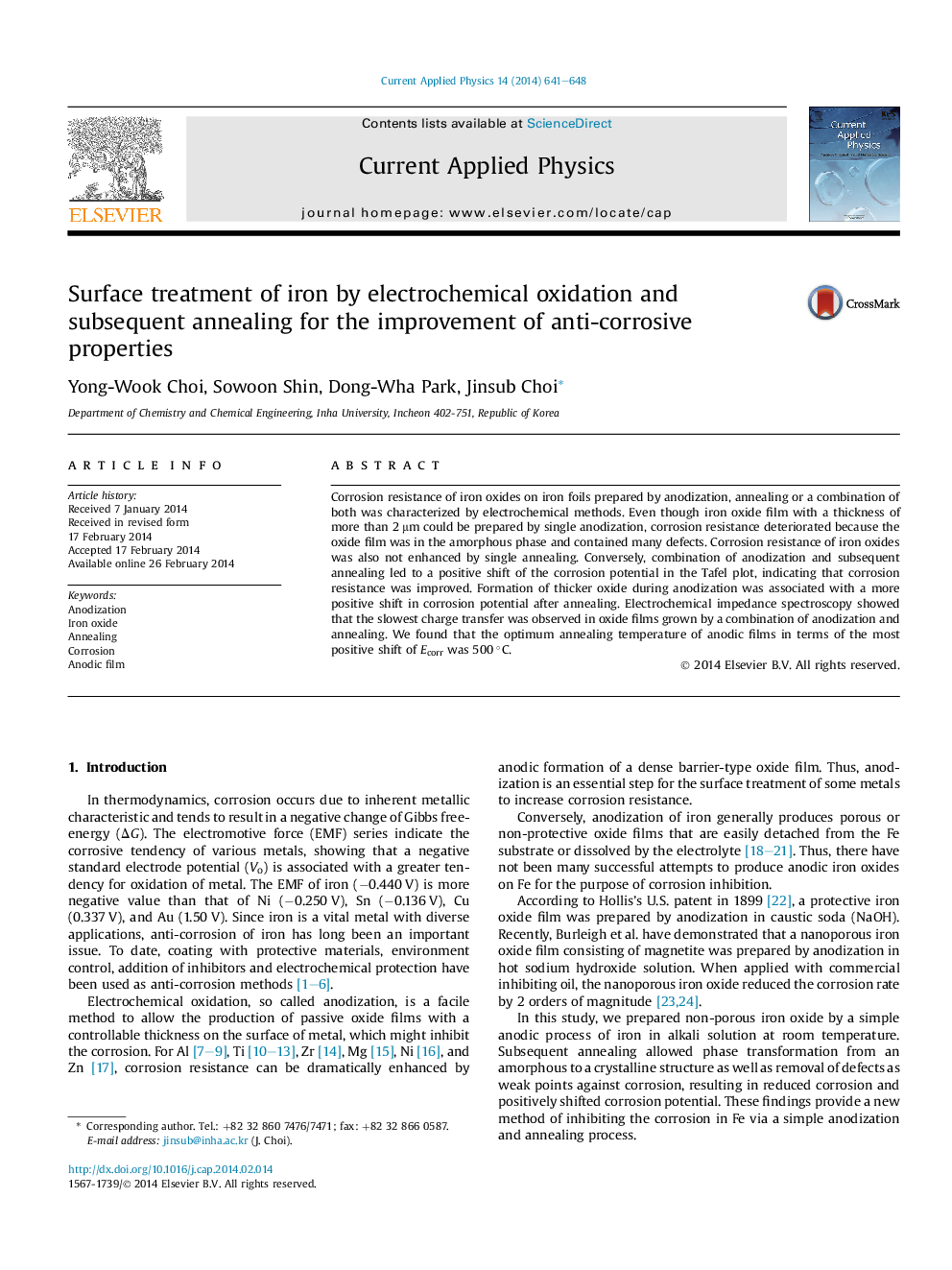| Article ID | Journal | Published Year | Pages | File Type |
|---|---|---|---|---|
| 1786323 | Current Applied Physics | 2014 | 8 Pages |
Abstract
Corrosion resistance of iron oxides on iron foils prepared by anodization, annealing or a combination of both was characterized by electrochemical methods. Even though iron oxide film with a thickness of more than 2 μm could be prepared by single anodization, corrosion resistance deteriorated because the oxide film was in the amorphous phase and contained many defects. Corrosion resistance of iron oxides was also not enhanced by single annealing. Conversely, combination of anodization and subsequent annealing led to a positive shift of the corrosion potential in the Tafel plot, indicating that corrosion resistance was improved. Formation of thicker oxide during anodization was associated with a more positive shift in corrosion potential after annealing. Electrochemical impedance spectroscopy showed that the slowest charge transfer was observed in oxide films grown by a combination of anodization and annealing. We found that the optimum annealing temperature of anodic films in terms of the most positive shift of Ecorr was 500 °C.
Related Topics
Physical Sciences and Engineering
Physics and Astronomy
Condensed Matter Physics
Authors
Yong-Wook Choi, Sowoon Shin, Dong-Wha Park, Jinsub Choi,
